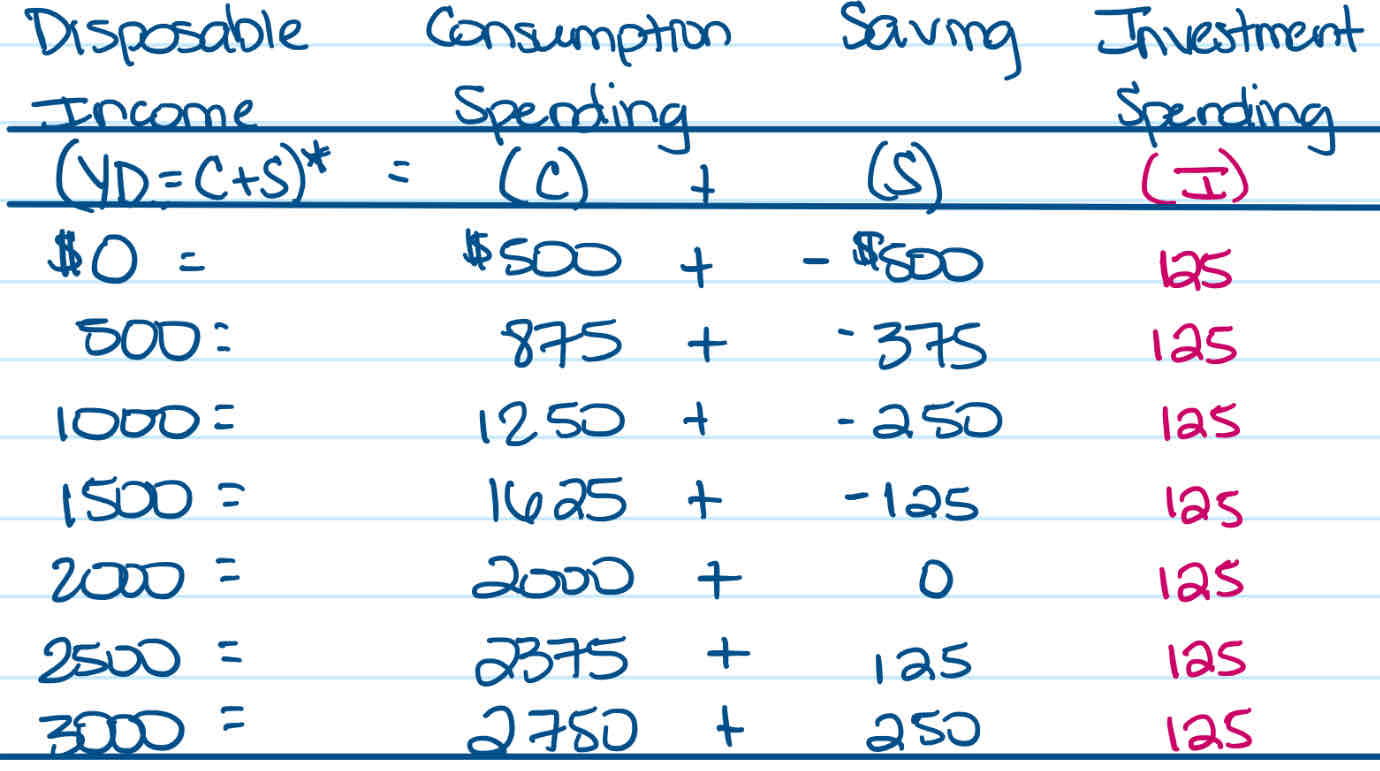Ch 9 Notes Introduction to Keynesian Model
1/39
Earn XP
Description and Tags
Notes from Class
Name | Mastery | Learn | Test | Matching | Spaced |
|---|
No study sessions yet.
40 Terms
Keynesian Model Characteristics
Very active role of government
Recession results from inadequate AD
Shirt-run view of the economy
Equilibrium may not equal full employment
Prices, wages & interest rates may be inflexible
Aggregate Spending (Expenditures)
C + I + G + NX
Consumption Spending Table
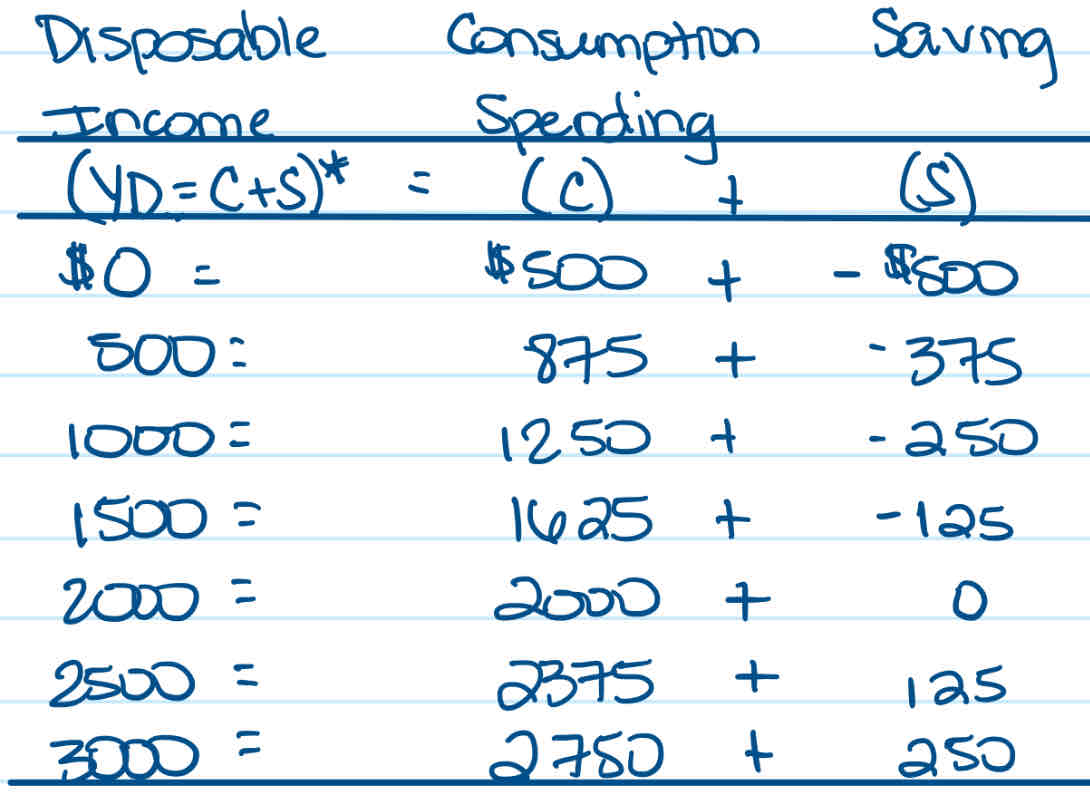
Propensities
Marginal Propensity to Consume (MPC)
Marginal Propensity to Save (MPS)
Marginal Propensity to Consume (MPC)
The change in (C) consumer spending associated with a change in (Yd) disposable income
MPC Formula
∆C = C2 - C1
∆Yd = Yd2 - Yd1
Marginal Propensity to Save (MPS)
The change in (S) saving associated with a change in (Yd) disposable income
MPS Forumla
∆S = S2 - S1
∆Yd = Yd2 - Yd1
Consumption Function
Shows the mathematical relationship between (C) consumption spending and (Yd) disposable income
General Expression of Consumption Function
C = Co + (MPC)(Yd)
Co in consumption function (C = Co + (MPC)(Yd) is
Autonomous Consumption
Autonomous Consumption
Amount of (C) consumption spending when (Yd) disposable income is 0
Break-even Income
The level of (Yd) disposable income when (S) Saving is 0
Investment Spending
Changes in the nations capital stock
(machinery, equipment, building, business spending)
Determinants of Investment Spending
Interest rate
Expectations of future sales, profits
Corporate taxes
Interest rates
Negatively related: When interest rates rise, the cost of borrowing increases, discouraging investment. Conversely, when interest rate fall, borrowing costs decrease, encouraging investment.
Expectations of future sales
Positively related: When businesses anticipate higher future sales and profits, they tend to increase investment spending to capitalize on these expected gains.
Corporate Taxes
Negatively Related: If taxes are raised, firms have less to spend and invest. Conversely, when taxes are lowered, firms have more to spend and invest.
Investment spending is assumed autonomous means
It is independent of changes in income or output levels. It's determined by factors like business expectations, technology, or government policies
Equilibrium Income
Closed economy
Private economy
Closed economy
No trade going on; no exports, no imports
Private economy
No government spending, no taxes
3 ways to determine equilibrium income
AD = AS (approach w/ graph)
Saving = Investment (approach w/ table)
Aggregate Spending = Total Production (approach w/ formula)

AD = AS (approach w/ graph)
The point where AD curve intersects AS curve represents the equilibrium level of income

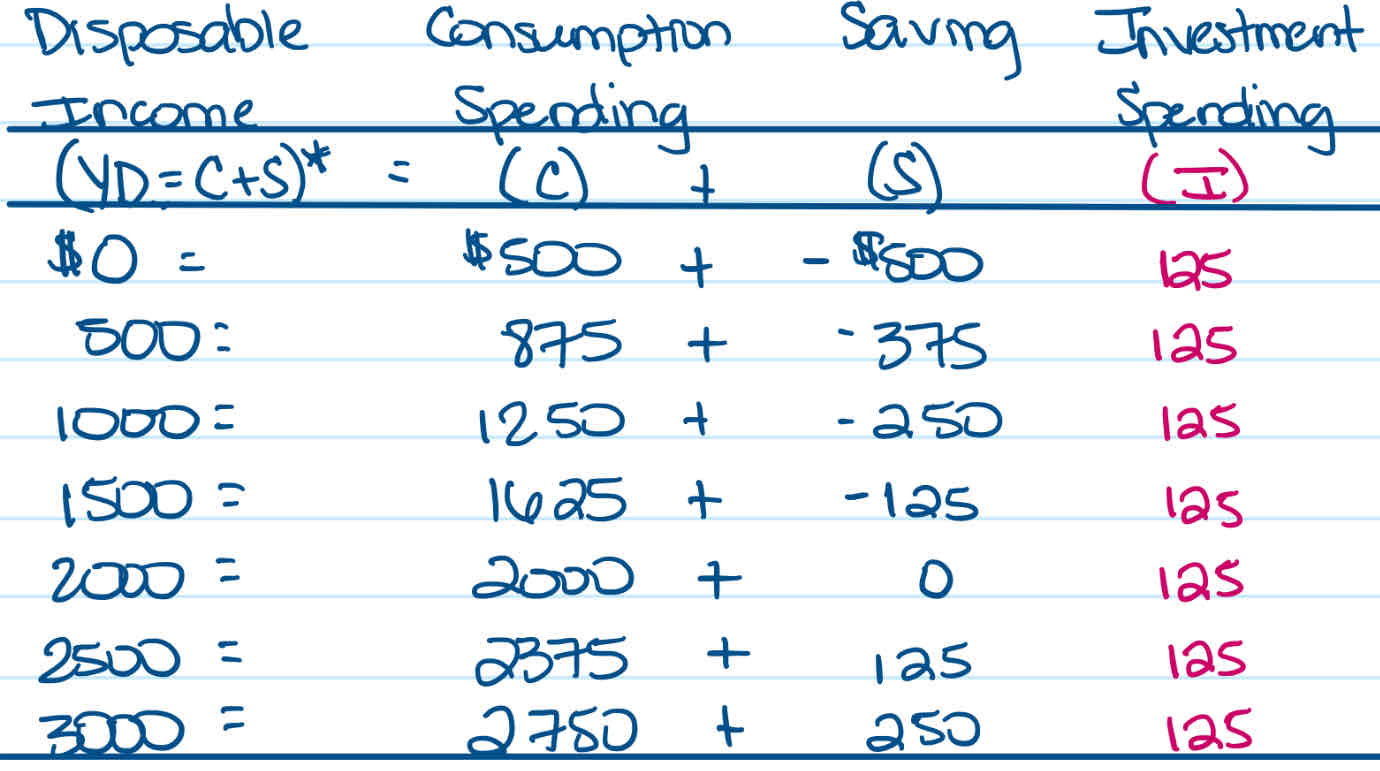
Saving = Investment (approach w/ table)
The point where saving (S) equals investment (I) is the equilibrium income level
125 = 125, so equilibrium is 2500
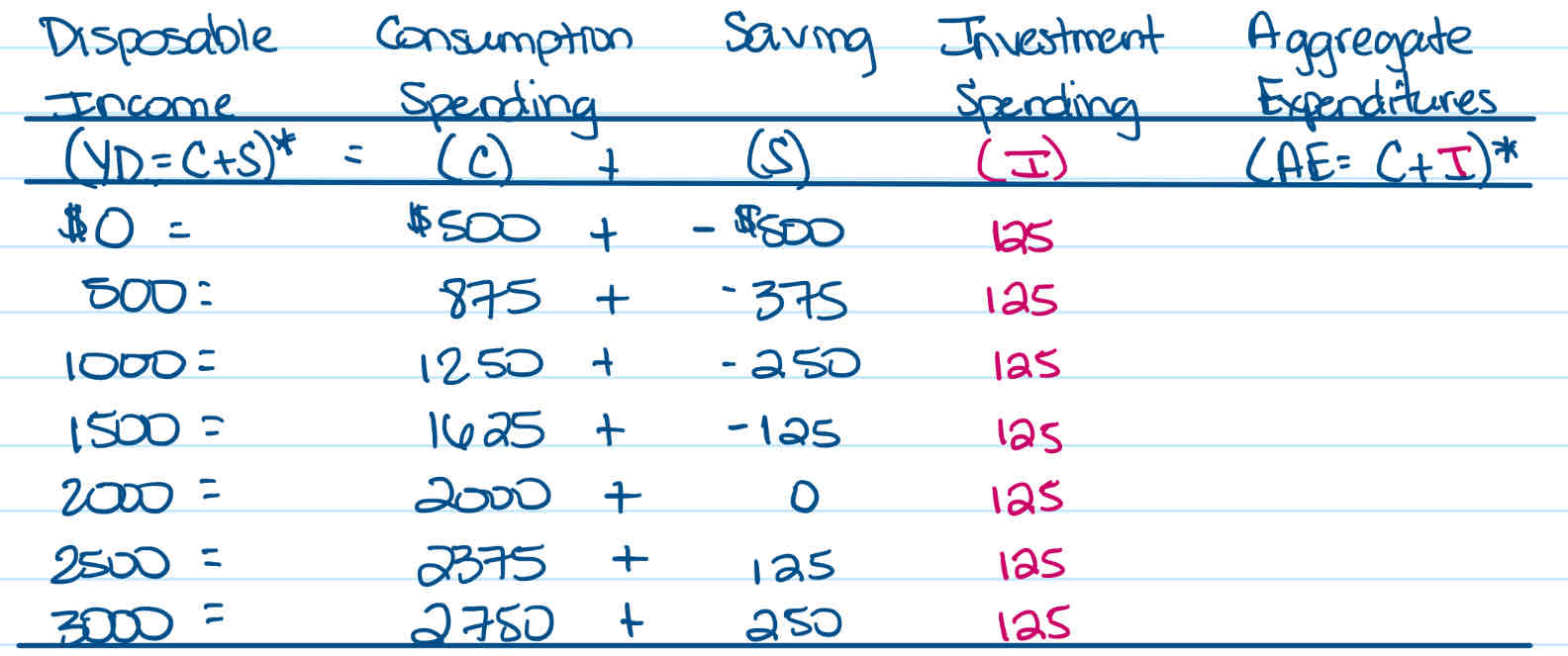
Aggregate Spending = Total Production
(In a closed economy, Aggregate Spending is just C + I, fill in table and find equilibrium income using consumption function formula)
Consumer Spending + Investment = Disposable Income
C + I = Yd
Co + (MPC)(Yd) + I = Yd
500 + .75(Yd) + 125 = Yd
625 + .75Yd = Yd
-.75Yd -.75Yd
625 = .25Yd
625/.25 = .25Yd/.25
2500 = Yd

Disequilibrium
Where AD ≠ AS. This can lead to unemployment or inflationary pressures.
Aggregate Spending < Total Production
(Demand < Supply = Surplus)
Inventories increase, production decrease, & unemployment increase
Aggregate Spending > Total Production
(Demand > Supply = Shortage)
Inventories decrease, production increase & unemployment decrease
Spending Multiplier
The multiple by which a small change in aggregate spending will result in a much larger change in real income (GDP)
Spending Multiplier Formula
1/1-MPC or 1/MPS
Aggregate Spending/ Real Income (GDP) Relationship
∆ Real Income (GDP) = (∆ Agg Spending) x (Spending Multiplier)
Adding (G) Government Spending & (T) Taxes - 3 sector model
Consumer Spending + Investment Spending + Government Spending = Total Production
C + I + G = Y
Solving for Equilibrium Income (GDP) in 3 sector model with given information:
(Y = income, Yd = disposable income = Y-T (income - taxes)
C = $200 + .80(Yd) I = $100 G = $200 T = $200
Aggregate Spending = Total Production
C + I + G = Y
$200 + .80(Yd) + $100 + $200 = Y
$200 + .80(Y-T) + $100 + $200 = Y
$200 + .80(Y-$200) + $100 + $200 = Y
$200 + .80Y - $160 + $100 + $200 = Y
$340 + .80Y = Y
-.80Y -.80Y
$340 = .20Y
$340/.20 = .20Y/.20
$1700 = Y
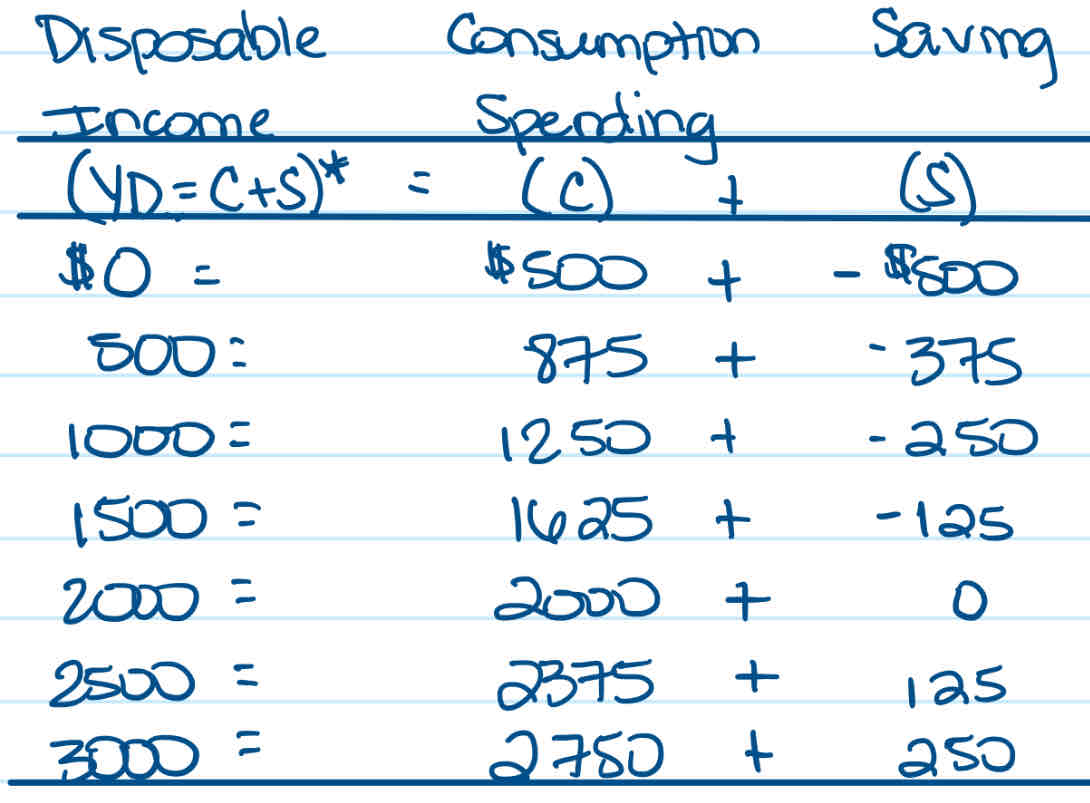
Use table to find MPC
MPC = ∆C/∆Yd
MPC = C2 - C1/Yd2 - Y1
MPC = 875 - 500/500 - 0
MPC = 375/500
MPC = .75
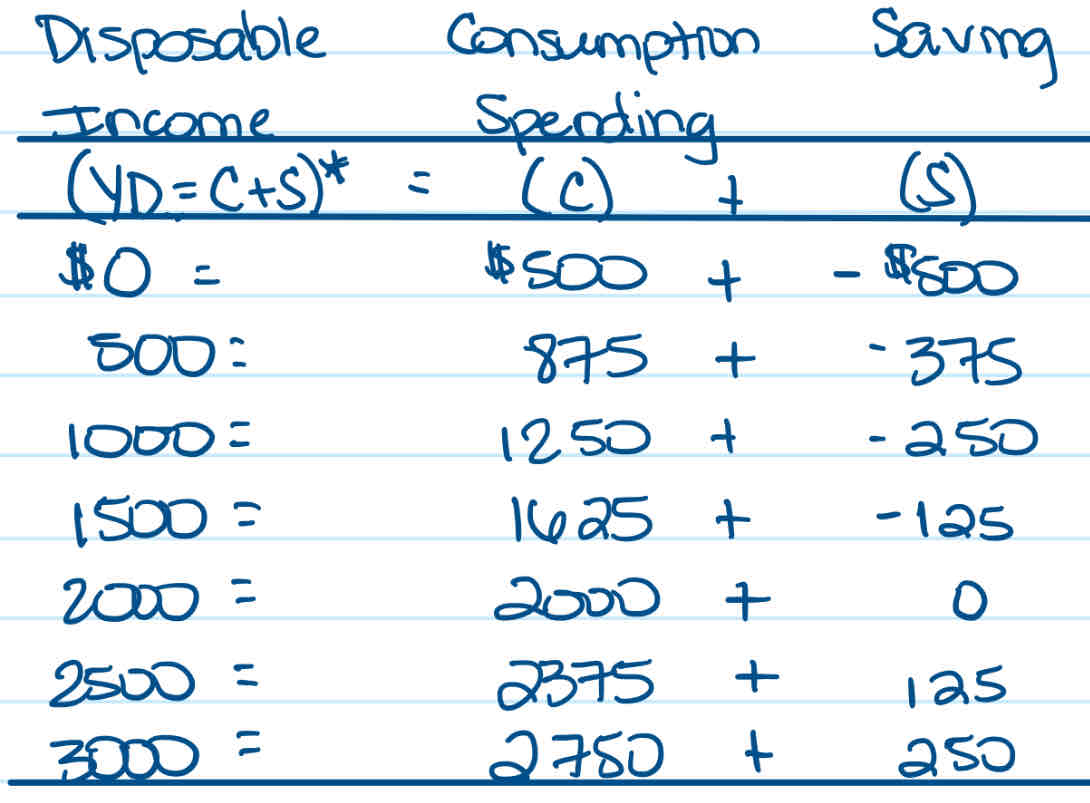
Use table to find MPS
MPS = ∆S/∆Yd
MPS = S2 - S1/Yd2 - Yd1
MPS = -375 - (-500)/500 - 0
MPS = 125/500
MPS = .25
MPC + MPS = 1
.75 + .25 = 1

Use the consumption function to find C when Yd is $1000. Verify with table.
C = Co + (MPC)(Yd) {*Co is amount of consumption spending when disposable income is 0}
C = 500 + .75×1000
C= 500 + 750
C = 1250
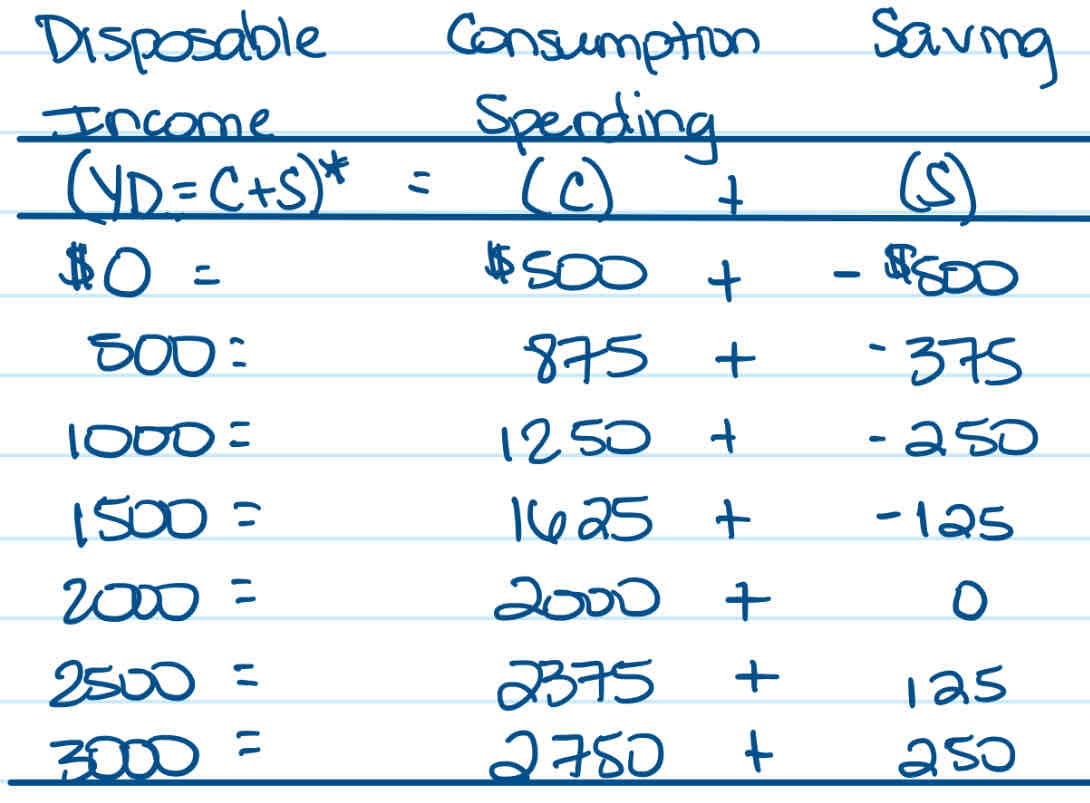
Use table to find break-even income
2000
Add Investment of 125 to table
